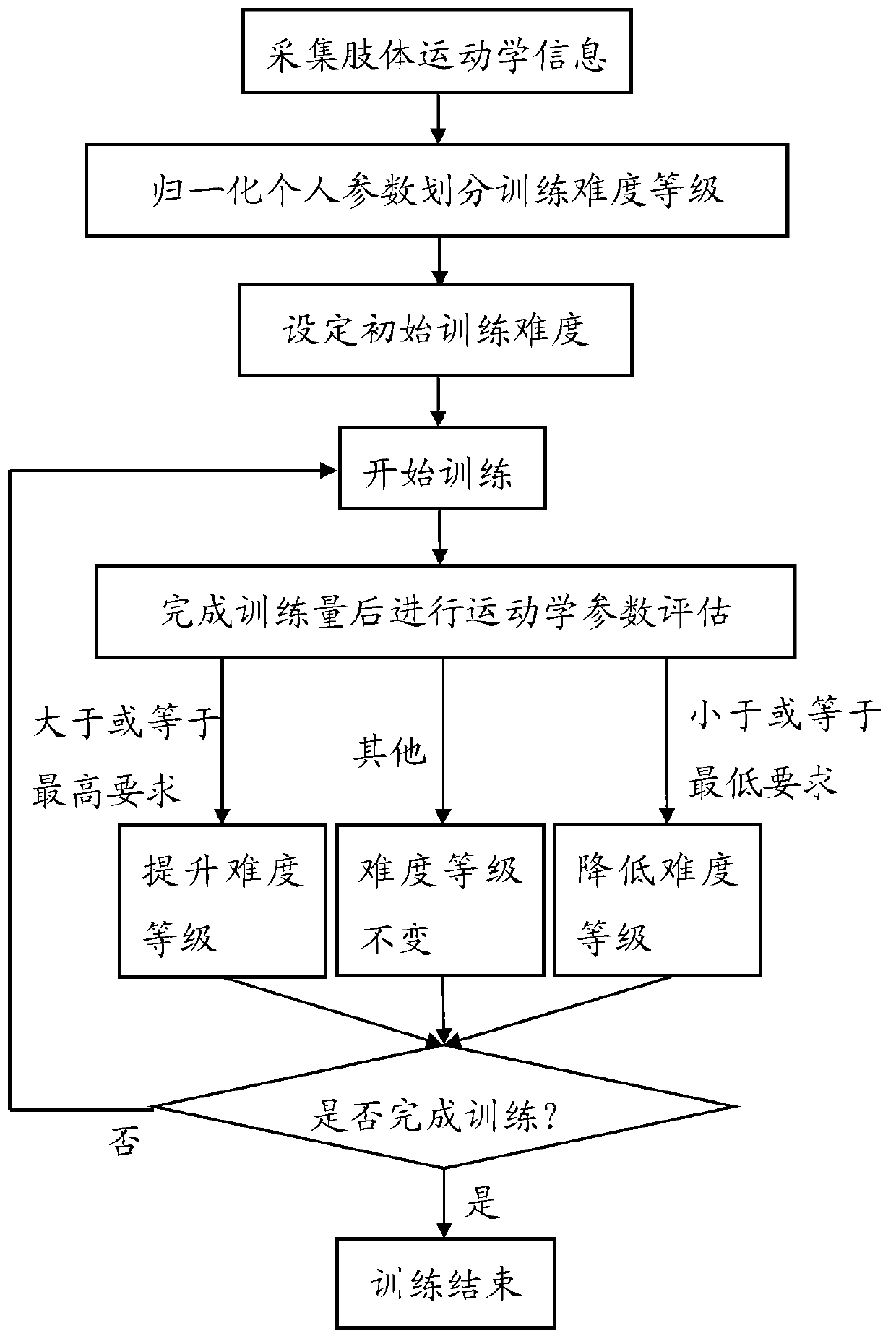Difficulty adjusting method for limb rehabilitation training
A technology of rehabilitation training and adjustment methods, applied in the medical field, can solve problems such as frustration, loss of enthusiasm for training, and mismatch of patient difficulty
- Summary
- Abstract
- Description
- Claims
- Application Information
AI Technical Summary
Problems solved by technology
Method used
Image
Examples
Embodiment 1
[0059] Such as figure 1 As shown, the present embodiment provides a method for adjusting the difficulty of limb rehabilitation training:
[0060] A. Collect the patient's limb kinematics information or game scores, and divide the difficulty level according to the kinematics information or game scores in advance. Set the corresponding minimum and maximum required scores for each difficulty level, and determine the patient's movement difficulty;
[0061] Wherein, collecting the limb kinematic information or game score of the patient can calculate the limb kinematic information according to the FITTS law, determine the normalized exercise difficulty level, the time required to complete training at different difficulty levels, and the training period for completing the training task; Specifically
[0062] According to the FITTS law, the difficulty level and the time required to complete the training of different difficulty levels are calculated, and the formula is:
[0063] T=a...
PUM
 Login to View More
Login to View More Abstract
Description
Claims
Application Information
 Login to View More
Login to View More - Generate Ideas
- Intellectual Property
- Life Sciences
- Materials
- Tech Scout
- Unparalleled Data Quality
- Higher Quality Content
- 60% Fewer Hallucinations
Browse by: Latest US Patents, China's latest patents, Technical Efficacy Thesaurus, Application Domain, Technology Topic, Popular Technical Reports.
© 2025 PatSnap. All rights reserved.Legal|Privacy policy|Modern Slavery Act Transparency Statement|Sitemap|About US| Contact US: help@patsnap.com



